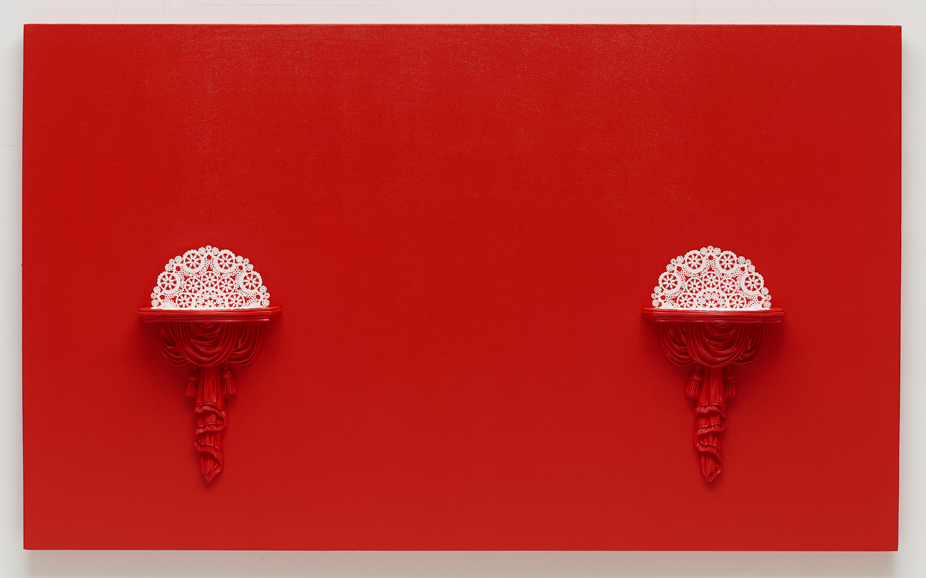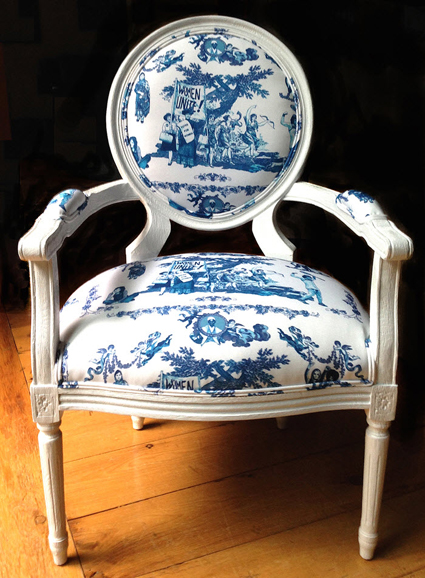Among the many quirky moments in the recent “Sherlock” special — set in the Victorian London of Arthur Conan Doyle, Holmes’ creator — is one in which Dr. Watson, frequently absent from his home to attend Sherlock’s cases, is exasperated by the absence of his wife, Mary, frequently attending the business of state as a spy for the British government. He’s also perturbed by their impertinent maid, who’s less interested in dusting and polishing his boots correctly than in discerning why she never appears in the Sherlock Holmes stories Watson writes for The Strand Magazine.
“I shall have a word with my wife to have a word with you,” Watson fumes. Elementary. Because it’s a woman’s place, no matter how lofty, to run the house. And it has been that way since at least the time of the ancient Greeks. The men held forth in the agora, or marketplace, the gymnasium and the symposium and at all those parties where the wine flowed and the hetairai beguiled. Their wives in turn confined themselves to the home and the supervision of its contents, including children and slaves, Greek democratic ideals being restricted to freeborn men.
But the Victorian adage that “a woman’s place is in the home” refers not only to the marginalization of women — a subject explored in “SHE: Deconstructing Female Identity,” a multifaceted exhibit opening at ArtsWestchester March 13. (See below.) It suggests that women remain the emotional hearth of any home. And it’s also a reminder that without women taking the lead that probably nothing would ever get done there. Or at least it wouldn’t get done as efficiently, beautifully or even perfectly as many of us ladies would have it. Talk to women from Greenwich to White Plains when they are away from the company of men, and many — though certainly not all — will lament how the men in their lives attend to household tasks and care for their children.
They’re not finishers,” one opines. Another scoffs at the notion that her husband should do the grocery shopping, observing that he wouldn’t buy more than a day’s worth of food. Still another is incredulous that her hubby didn’t check their 7-year-old’s homework. Some female friends prefer to express gratitude for male help around the house — and then rewash the dishes or remake the bed “the right way.”
Perhaps this is hard-wired into women’s DNA after all those millennia honing their fine-motor skills as they gathered plants while their men went about slaying mastodons. But the view of women as domestic goddesses has been reinforced from Madison Avenue to Hollywood.
Even though Joan Crawford and Marlene Dietrich were glamorous stars, they were well-known — Crawford infamously so — as haute hausfraus who weren’t above getting down on their hands and knees to scrub a bathroom. (Today Joan and Marlene would be proud of Jennifer Garner, a Martha Stewart devotee; Gwyneth Paltrow and her Goop lifestyle blog; and Blake Lively, a self-proclaimed homebody.)
Period films — including those made or set in the 1960s and ’70s at the crest of the most recent wave of feminism — also underscore the domestic womanly role model. When Rex Harrison speak-sings “I’ve Grown Accustomed to Her Face” in “My Fair Lady,” it’s not just because he’s grown used to Audrey Hepburn’s lovely mug, but because without her organizational skills, he can’t find his damn slippers. And when Elizabeth Taylor must accept the rough-hewn ways and homestead of bridegroom Richard Burton in “The Taming of the Shrew,” she does so by turning the tables — literally — swathing her trademark raven tresses in a scarf, donning the Renaissance equivalent of an apron, whipping out her feather-duster and snapping that villa into shape.
Even in the postfeminist era, the not so subtle message of female domestic necessity shines through. In the film “Munich,” Israeli Prime Minister Golda Meir discusses retaliation for the PLO’s massacre of Israeli athletes at the 1972 Olympics while serving key male figures coffee. And in “The Queen,’’ Elizabeth II faces a monarchical crisis in the wake of the death of Diana, Princess of Wales, but not before settling on the leftover lamb stew for a family meal.
It’s not just the stuff of fictional treatments. Remember when potential first lady Hillary Clinton was castigated for saying she wasn’t the type to stay home and bake chocolate chip cookies? Today, she is running for president of the United States.
And you can find her recipe for chocolate chip cookies with an oatmeal twist on Good Housekeeping’s website.
# # #
Among the aspects of female identity considered in “SHE,” at Arts-Westchester in White Plains March 13 through June 25, is the woman’s relationship to the home. In Tricia Wright’s “Marginalia,” white doilies, faucets and dead animals on sculpted sconces suggest “the sidelined status of the home and those who work in it, despite its critical influence on us as individuals and citizens,” Wright observes. Rebecca Mushtare’s multimedia “Matrilineage” (2012) consists of wallpaper printed with thermochromatic inks that when touched turn invisible, revealing vignettes from Charlotte Perkins Gilman’s seminal feminist short story “The Yellow Wallpaper,” about an intellectually straitjacketed woman’s descent into madness. And Laura Garcia Colvin’s toile-based drawings, reproduced as upholstery fabric to update Louis XVI-style chairs, is part of a larger installation considering the tensions between private and public lives.
For more, visit artswestchester.org.






